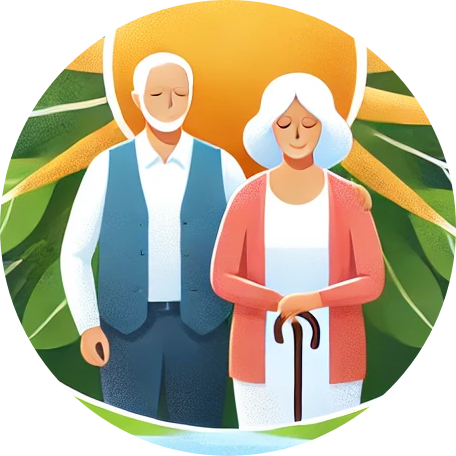
Understanding the Hidden Dangers of Sedentary Living
In today's fast-paced world, we often equate productivity with long hours spent at a desk. However, Japan's oldest doctor offers a stark reminder: excessive sitting may be silently robbing us of our strength, particularly as we age. Sitting often feels innocuous, yet after the age of 60, our muscles can begin to decay without the right stimulation. The connection is surprisingly direct—when we sit, we hinder our body's ability to utilize insulin effectively, leading to a host of complications that gradually chip away at leg strength and overall vitality.
In 'Japanese Oldest Doctor Warns: This Daily Mistake Weakens Seniors Legs', we explore critical insights about the dangers of a sedentary lifestyle and how simple shifts can reclaim lost strength.
The Cost of Stillness: A Diminishing Muscle Mass
Muscle mass reduction is more than a cosmetic issue; it's a serious health concern. Research indicates that each hour of sitting contributes to a 1.7% decrease in lean muscle mass. This decline doesn't just make climbing stairs feel like a monumental task; it affects our entire quality of life. As Dr. Hinohara suggests, we need to abandon the myth that rest preserves strength. Instead, he highlights the importance of **micro-movement medicine**, advocating for simple actions like standing up or stretching every 30 minutes. This can reduce muscle decline risks by an impressive 45%. Even short movements can be a powerful ally as they inform our muscles, "You are still needed!"
Beat Evening Fatigue with Gentle Motion
Have you ever noticed that your legs feel heavier in the evening? You're not imagining things. Extended periods of inactivity, especially after meals, lead to poor circulation, which can make legs feel weighed down. In a fascinating study, researchers found that up to 50% blood flow reduction in the legs occurred after just eight hours of sitting, causing inflammation that exacerbates tiredness and discomfort. The ideal remedy, as suggested by our Japanese expert, occurs during the evening hours. Engaging in simple movements can restore circulation and warmth to your legs, leaving them feeling revitalized. One approach mentioned involves walking laps around the room after dinner, a practice noted by caregivers who saw significant improvements in their loved ones’ mobility.
GABA: The Calming Conductor for Muscle Repair
GABA (gamma-aminobutyric acid) is crucial for muscle repair and recovery, especially in older adults. After the age of 60, GABA levels may diminish, leading to decreased muscle protein synthesis and impaired recovery. Incorporating GABA-rich foods or supplements, particularly in the evening, may significantly aid muscle health. As illustrated by testimonies of patients who found renewed strength through GABA supplementation, restoring this neurotransmitter can be the secret to a stronger body and a more peaceful night’s rest. Simple dietary changes or gentle nighttime rituals might be all it takes to enhance muscle nourishment.
A New Perspective on Aging: Embracing Movement for Longevity
An aging population doesn't have to equate to a decline in vitality and strength. In studying regions renowned for their long-lived citizens, it's evident that movement is pivotal in maintaining health and strength. From Okinawa to rural Japan, elders embrace gentle physical activity as part of their daily lives, underscoring the belief that regular movement—even the smallest kind—can lead to remarkable improvements in muscle function and stability. Incorporating mobility routines that fit seamlessly into daily life can combat the myth that aging must equate with physical decline.
Taking The First Steps Towards Mobility
For those finding it challenging to incorporate movement into their day, setting small, achievable goals can lead to significant changes. Whether it’s using a kitchen timer to remind oneself to stand up or taking brief walks during break times, these little actions build a routine that emphasizes movement and flexibility. Rather than focusing on strenuous exercise, remember that the goal is to integrate moments of movement throughout your day. Even just a pair of two-minute walks can signal your body to awaken from its sedentary slump.
Conclusion: A Movement Revolution for Aging Gracefully
As we uncover these insights about the effects of sitting on our muscles and overall well-being, it becomes clear that sustained health and mobility are achievable through simple, restorative habits. Embracing movement—even in short bursts—can make a profound impact on our lives and create renewed connections with our bodies. By engaging in regular exercises and fostering supportive routines, we can defy the common narrative surrounding aging and instead, thrive in our later years. Let's rewire our thinking; motion is not merely an action—it's a lifeline to our health. Consider integrating these practices into your evening routine tonight. Every step you take brings you closer to reclaiming your vitality.
 Add Element
Add Element  Add Row
Add Row 



Write A Comment